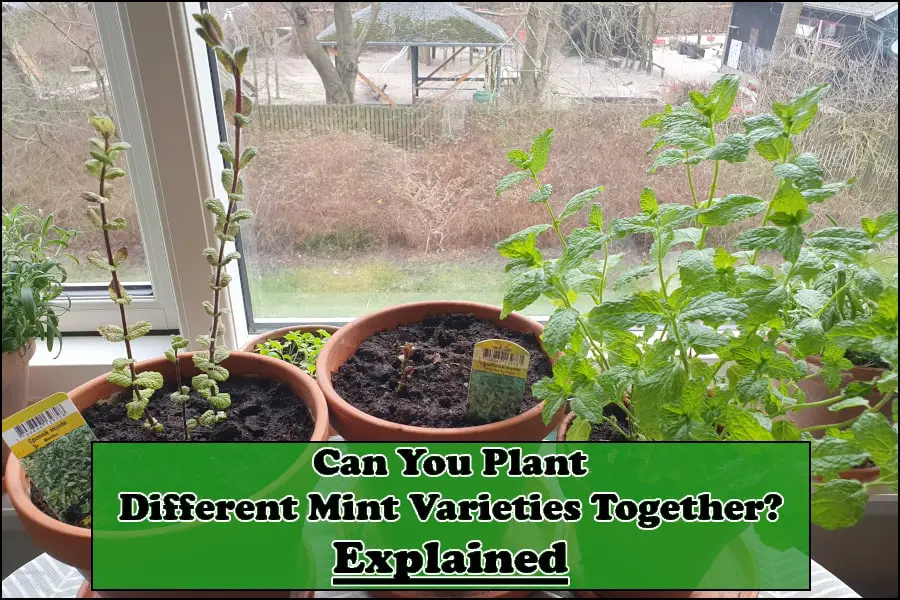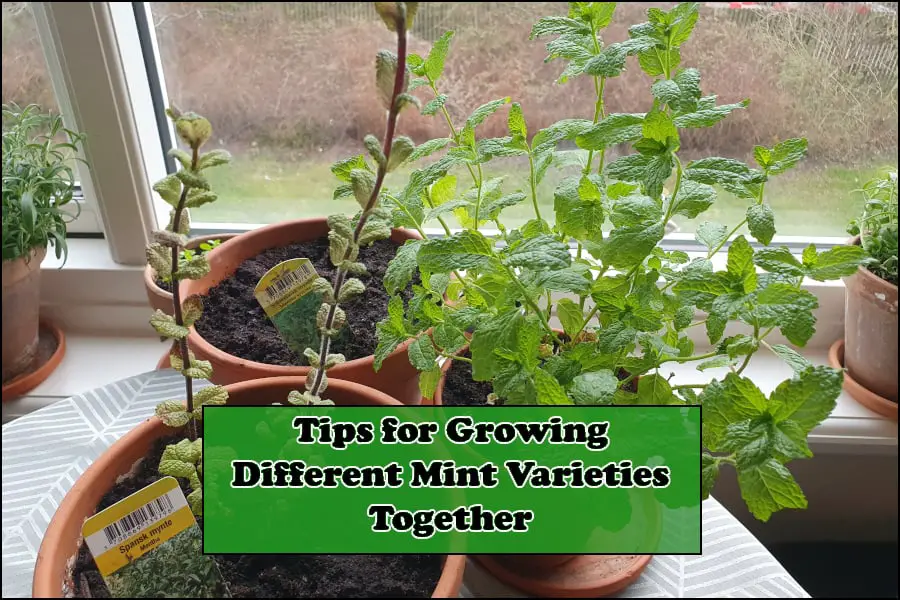I recently bought three different mint varieties at a local plant nursery, but because I know that mint plants spread fast, I made sure to ask one of the gardeners if she had some tips for growing different mint varieties together, and most importantly, can you actually grow different mint varieties together?
Here is what she told me:
While you can plant different mint varieties together, it is not recommended as they will quickly spread and mix, making it difficult to tell them apart. By planting each mint variety in individual pots, you can grow them near each other without them getting mixed.
So as you can see, while you can grow different mint varieties together, there are some downsides to it, but also ways to get around it. Below, I explain a lot more about what happens if you plant different mint varieties together so you can decide if you should do it or not.
Later in this article, I also explain a method for planting different mint varieties together in the ground without them getting mixed that I learned from the gardener who sold me my plants.

What Happens if You Grow Different Mint Varieties Together?
The reason why you might not want to plant different mint varieties together is that they spread and get mixed because they grow runners, which is a type of growth that spreads horizontally, growing roots and new stems along the way.
This is also why most people (myself included) recommend against planting mint in the ground, but instead recommend using a pot. To prevent the plant from taking over your garden.
But that doesn’t mean you can’t plant different mint varieties together if you want to. Before you do, you should know what happens, though, because it probably won’t give you the result you expect.
Here is what happens when you plant different mint varieties together:
It becomes difficult to tell the plants apart
Because mint plants spread rapidly, growing different varieties together will quickly cause the plants to get mixed. This can make it difficult to tell which is which unless you know how to tell them apart or can taste or smell the difference.
Because mint grows fast during the growing season, two plants can be completely mixed with each other within a single growing season if they are planted near each other.
The plants can lose individual scent and flavor
According to the Royal Horticulture Society, growing different mint varieties together can also cause them to lose their individual scent and flavor.
Different varieties might cross-pollinate
According to Gardening Know How, some mint varieties are also known to cross-pollinate when planted near each other. This means that the seeds the plants produce can carry attributes from both varieties, which may result in unfavorable flavors or scents.
When I bought the three mint plants you can see in the photos in this article, I made sure to ask the gardener I bought them from if she had some tips for growing them together without getting them mixed, and she sure did. I explain what I learned below.
How to Prevent Different Mints From Mixing in the Ground

It is generally not recommended to grow mint in the ground because it will quickly spread and take over more and more of the garden. There are, however, some things you can do to grow different mints together while still preventing them from spreading and taking over the garden as well as mixing with each other.
The only way to prevent mint plants from reaching each other and mixing is by separating them physically.
The easiest method is by growing your mint in a pot, but what if you want to grow your mint in the ground but not have it spread and mix?
The nice employee I talked to at the plant nursery who sold me my mint plants told me about a technique she had been using to grow different mint varieties next to each other in the ground for years without any problems. This is what she taught me:
To grow different mint varieties in the ground without allowing them to spread and mix, you can plant them in pots where the bottom has been removed and bury most of the pot in the ground. Just leave 3-4 inches (7.5-10 cm) of the pot above the ground to prevent the plants from spreading.
With this method, the pot acts as a physical barrier that prevents the mint plants from spreading.
When the employee at the plant nursery I spoke to told me about this, I asked if the runners won’t just spread through the bottom of the pot since it has been removed?
She told me that this usually won’t happen because mint runners tend to grow out near the ground’s surface and not as deep as the bottom of the pot. The roots, however, will happily grow out at the bottom, making the plant stronger and allowing it to grow faster.
She did also say that it is a good idea to keep an eye on your plants once in a while to make sure they don’t spread and remove runners that try to escape the pot.
How Far Apart Should Different Mint Varieties Grow?
Mint plants can spread rapidly if grown in the ground, so if you plant multiple mint varieties in the ground near each other, it is only a matter of time before they reach each other and get mixed.
For that reason, I don’t recommend planting mint in the ground, but instead using a pot because the only way you can prevent them from spreading and reaching each other is by separating them physically.
If you have a really large garden where you can plant them very far from each other, they also might never reach each other depending on a couple of things such as how the soil is and what else is between the plants.
But even then, they can still become cross-pollinated since mint plants are pollinated by bees. According to Richters, the only way to prevent cross-pollination between different mint varieties entirely is by keeping them at least a kilometer (about 0.6 miles) apart.
Unless you want to use the seeds from the plants, you shouldn’t worry about cross-pollination, though. You can always take cuttings or cut off some runners and make them grow roots by placing them in water (propagation) and then growing them as new true-type plants. The cross-pollinated plant might produce off-type seeds, though.

